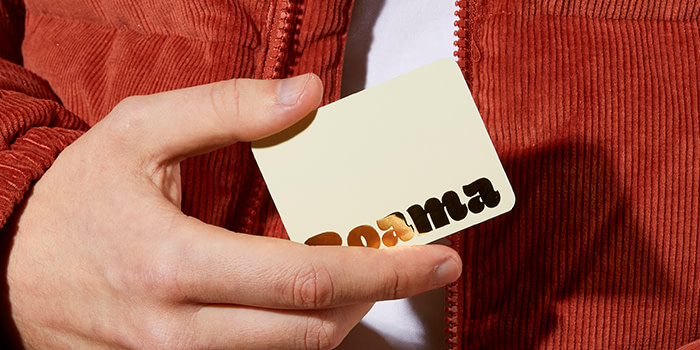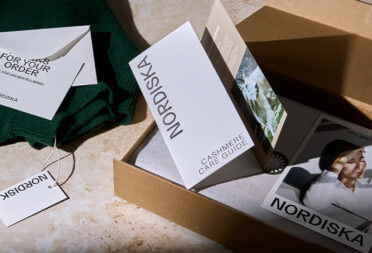Business Card Etiquette Around the World

A poorly prepared Business Card can doom an international meeting before it begins. Read our top Business Card etiquette tips for success.
We’re sure you’ve created stunning Business Cards that speak for themselves, but if you’re headed overseas, you might want to brush up on global good manners. The last thing you want is to commit a faux pas that stops your card from getting the reception it deserves! Here are our top Business Card etiquette tips for around the world.
Asian Business Card Etiquette
Respect and rank play a larger role in Japan and China than they do in the West. Prepare to be judged on every aspect of your Business Card etiquette, from the way you present your Business Card to how you store it. Don’t be afraid to over-estimate how many cards you will need, either, as giving the whole office (or, in Japan, just about anyone you meet) a card is seen as the done thing. You should also make sure a Business Card Holder is top of your packing list, any other storage method just won’t cut it.
Chinese Business Card Etiquette
Business etiquette in China is based on the efforts you have made to understand and adapt to the local culture. For example, presenting a Chinese associate with an English-only card will likely cause catastrophic damage to your relationship..
When creating your Chinese translation, ensure you have localized the script correctly. Simplified Chinese is used in mainland China and Singapore while traditional Chinese characters are used in Hong Kong, Taiwan and Macau – presenting a translated version in the wrong script can be interpreted as disrespectful or ignorant.
Your information should include your name, business title and usual contact details. You can also be a little free to boast here – if your company is the largest of its sort in the US or the one with the longest-running history, this is considered significant in Asia, so add it in.
Try and introduce a little color to your China-bound Business Card, red is seen as lucky. MOO even lets you add chic accents with Luxe Business Cards so you can have a flash of fortuitous color without changing your main design.

Business Card Etiquette in Japan
While a translated Business Card is not as crucial in Japan as it is in China, Japan is arguably even bigger on respect and Japanese Business Card etiquette is something of a ceremony. Make the effort to ensure your new colleagues can comfortably read the card you provide. They should be printed with Chinese/Japanese on one side, English on the other.
Cards should be taken with both hands. It is not uncommon to keep both hands drawn up and ready to receive, even after you have offered your card. The exchange should be accompanied by a bow and a vocal introduction of who you are and your job title. You should also confirm the name of the person as you read it, to assure them that you will not soon forget who they are.
Business Cards should always be kept out, either on top of your holder, facing your colleague, or – in the case of numerous cards – set out on the desk in the order of the colleagues opposite you, to help remember names if nothing else!

Manners Matter
The presentation of your 100th Business Card that day should be done with the same respect as you demonstrated with card number 1. So don’t imply that the card you are presenting is just one of many. For example, setting out a stack of cards and handing them out like dealing cards, or even holding more than one in your hand at a time, could be seen as rude.
On that note, your first card should always be presented to the most senior staff member, working down the hierarchy after that. Business Cards should be exchanged on meeting. You should be standing, and never hand it over with just one hand – hold it out with both, translated side facing up.
The Business Card is a representation of a business, so take the time to read and appreciate the card you receive, don’t just put it away. Carefully place it in a case or keep it on the desk so you can refer back to it.
Business Cards in India
If you are heading to India, Business Card etiquette changes once again. You should not necessarily bring a translated Business Card as English is widely understood and accepted as the language of international business, but you should be sure to hand over your card with the right hand, as is custom. You might also want to add your alumni and college degree as academics are highly prized in India.
Middle East Business Card Etiquette
Business etiquette in the UAE and the Middle East is a blend of Asia and Europe. There is much less ceremony about the exchange, but you should aim to have two-sided Business Cards in Arabic and English. Like in Japan, Business Cards should be given out freely as a friendly gesture to both clients, colleagues or fellow business visitors you meet during your trip. You should hand out cards with your right hand.
Don’t be disarmed by the relaxed mood that your meeting may have, as many business people in the Middle East see business as a chance to foster personal friendships.
European Business Card Etiquette
Handing over your Business Card in Europe is not unlike doing so stateside, but there are little things that give the exchange a bit of continental flair. While a carrying case isn’t considered the be-all and end-all of card storage, it will help sharpen your professional image.
- Unlike the UAE and Asia, in Germany, Business Cards are seen as a way to deliver prized information – that is, your personal contact details. As such, you should not hand them out to everyone you meet, but give one to the associates who need direct access to you.
- In France, a translated Business Card will be greatly appreciated. Your surname should also be written in capitals to be more visible.
- Italians also appreciate translated cards, and information on your college degree should be added, too.
- The UK is relatively relaxed when it comes to Business Cards, which can be exchanged at any point in the meeting, usually towards the end as a way to exchange details and bring the meeting to a close. In the interests of politeness, never give out your card without first asking for the card of your associate.
Ready to go global with your brand? Make sure to stock up on Business Cards that are world-class with MOO.
Keep in touch
Get design inspiration, business tips and special offers straight to your inbox with our MOOsletter, out every two weeks.





